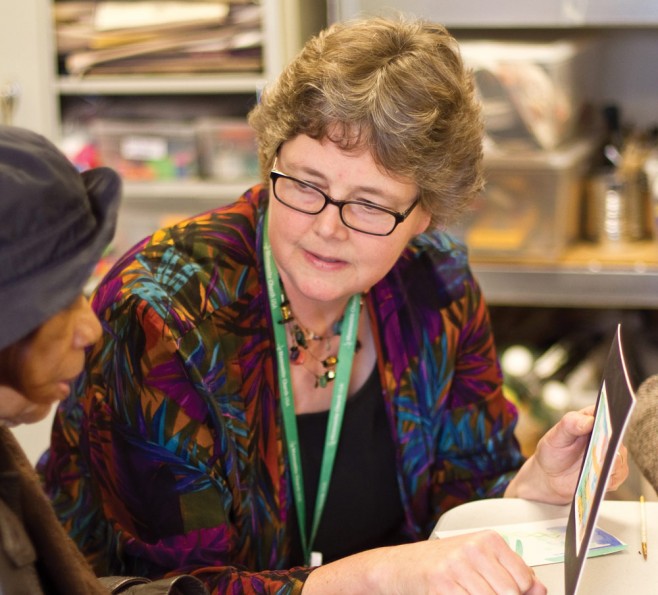
Carol Martin Johnson ’83
She once had a client with severe Alzheimer’s disease who had been an artist earlier in life. During his art therapy sessions with Martin Johnson, he would make large, colorful paintings, but after he left for the day, he’d forget what he had done. Every time he came back, Martin Johnson would show the man his own paintings, sparking his memory and helping him to reconnect with his inner senses of beauty and creativity.
Martin Johnson, an art therapist at the LIFE center in Philadelphia, Pa., recalls the story as an example of an inspiring aspect about art therapy: its focus on what’s right with people, not what’s wrong with them.
“Art taps into people’s strengths. The healthy part,” she says.
At the LIFE center, a day program run by the University of Pennsylvania as an alternative to nursing home care for the elderly, Martin Johnson sees about 30 clients per week in several art therapy groups. Using a variety of different media, people in her classes use art to express, understand and talk about the depression, isolation and grief many of them face, and to remind themselves that it’s never too late to try, to learn, to do something new.
Though Martin Johnson began her career as a nurse, working at various points in rural Pennsylvania, Philadelphia and Uganda, she long felt an urge to put her artistic, creative side to greater use. On her 40th birthday, Martin Johnson began graduate study in art therapy through a program of Drexel University. After completing an internship at the LIFE center and graduating in 2003, she has been working there since.
Her room on an upper floor, overlooking a busy Philadelphia street, is cluttered with paintbrushes, paper, string, glue and dozens of other supplies, but what occurs there is more profound than arts and crafts hour.
Art therapy can give form and shape to difficult feelings, feelings for which there may be no words. It can empower a person to gain understanding of the complex, the hidden, and the mysterious,” Martin Johnson says.
— Andrew Jenner